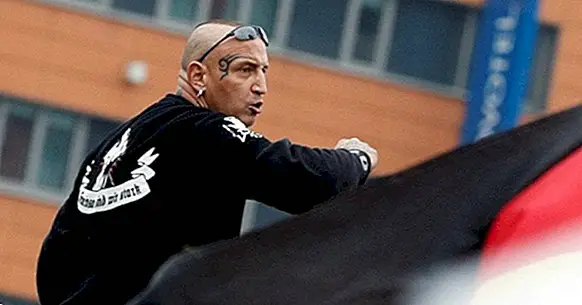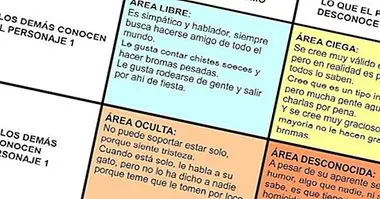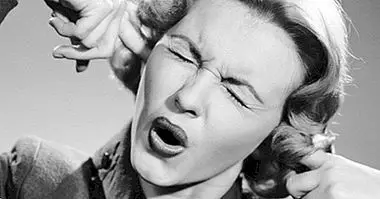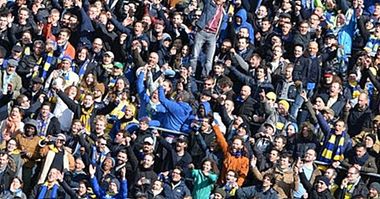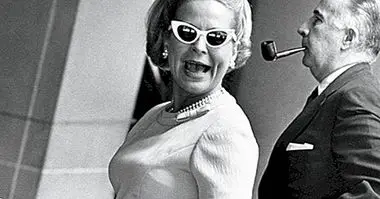Hooligans: the psychology of soccer hooligans
By definition, hooligans (ultras, barrabravas, etc.) are people who show aggressive behavior in football events. During the last decades, social psychologists and sociologists have paid attention to this phenomenon that had its peak in the 80s in Europe, but that today remains at the center of the controversy because of frequent altercations, such as those that occurred only a few weeks ago among radical fans of Deportivo de la Coruña and the Atlético de Madrid .
On this occasion, a person who was thrown into the river after a massive fight lost his life. These violent encounters between groups of hooligans have led to numerous deaths and tragedies throughout the history of football. One of the most talked about occurred in 1985 at the stadium Heysel (Brussels) where 39 people died while the final of the European Cup between Liverpool and the Juventus . Since 2004, the level of violence by these groups seems to have decreased somewhat, but it has not completely disappeared.
Hooligans: group psychology and violence by consensus
Police units specializing in these issues and collaboration between international security forces have made it difficult to organize these violent groups. However, street clashes after matches are still frequent.
The violence of the fans has also affected other sports, but "hooliganism" has traditionally been associated with football since it is the sport with the most followers in the world. Ángel Gómez , professor of Psychology at the UNED, affirms that "In Spain, between 1975 and 1985 there were 6,011 violent acts related to sport, 90% of which were directly related to football".
The term "hooligan", was born in England in the 60s and seems to come from a song of 1899 inspired by Patrick O'Hoolinhan , a porter (security) and Irish thief who lived in London. His family and he were famous for their frequent fights. According to reports from the London Metropolitan Police, O'Hoolinhan was the leader of a youth gang. The young people who belonged to his band were baptized as “hooleys ” (in Irish means wild).
After its beginnings in England, the boom in hooliganism It takes place in the 80s due to the public notoriety reached by the hooligans in different European countries, in addition to their high color in the animation of sporting events and the violence they generated inside and outside the stadiums. According to the group and the country of residence, there seem to be certain differences between these groups. For example, in Spain and Italy they often share the colors of the club with political ideology (fascism or radicalism of the left). However, in England, many groups are apolitical.
It is necessary to emphasize that the political ideology is only in the sample of symbols, since these groups do not pretend a social change, it is a symbolic ideology that is part of its ludic component. Another example of the differences between these groups of radicals are the "zulus". The "hooligan firm" associated with the team of Birmingham City , is one of the most heterogeneous groups of English ultras. Among its members there are a multitude of different ethnic groups, something that is not usual among hooligans.
Hooligans and group behavior
These groups offer their members the possibility of accessing a role : the one of ultras or hooligans. The young hooligan find in the group an already predisposed identity with a set of norms, values, sensations, beliefs , reasons and models of action. Through a process of "culturalization" and assimilation of the role, the member of a group adopts the images and rules of conduct through which it can be confirmed by the others and approved by the group.
It may seem that their actions are a spontaneous manifestation of exaltation of the colors of the team but they are, in fact, the result of a meticulous organization and many hours of work. Ultra groups are organizations. As such, they are financed in different ways (sale of merchandising, magazines, etc.) and require an organizational work that the leader and the ultras with responsibilities carry out during the week.
The violence of the hooligans and their playful component
One of the characteristics of hooligan behavior that has most attracted the attention of sociologists and social psychologists is the playful violence that employ these groups. The truth is that football is transformed into a set of rituals, chants, symbols and expressions that define the radical supporter.In the stadium, emotion moves away from rationality, football is a ritual complex that includes two parallel worlds: one in the field and one in the bleachers. When the fans gather to go to the stadium, they do it en masse. Then a series of intragroup and intergroup processes are initiated.
The actors produce behaviors about their identity or passion for the team, there are conflicts with the hooligans of the rival team, they seek their own reaffirmation (that of the group) and they build a self-image that is recognizable by the "others", to those who are denigrated. Fans perceive bad intentions in every action of their opponents (or rival fans), even when they do not exist. They react with hate and anger because they consider themselves innocent victims of the unjust arbitrator or the intimidating police.
Violence, identity and group reinforcement
This violence is aimed at maintaining the internal cohesion of the group itself or . Hooligans function as closed social systems and have to displace aggressiveness towards other social groups. The mechanisms that intervene in this type of tribal violence have been analyzed by the Theory of Social Identity of Tajfel and Turner . It is a violence that comes from the group and that has as its purpose group reinforcement. The presence of another group is the trigger for a mechanism of self-regulation that seeks to reduce internal differences by reinforcing the internal norm of uniformity. This is apparently gratuitous violence, which has no other objective than to humiliate the opponent in order to proclaim the superiority of the group itself.
Marsh, Rosser and Harré in "The rules of Disorder" (1978) call this phenomenon "ritualized aggression". For these authors, the confrontations between fans, apparently disordered, are in reality ordered confrontations and not exclusively real violence. María Teresa Adán Revilla, invesigadora of the University of Salamanca and expert in violence in football says:
"Two rival groups of fans exchange insults until, for each side, an individual advances, confronting in the open space between the two sides. There new insults are exchanged and threatening gestures are made, until one of them loses the ground and retires. The result of a successful 'fight' is the withdrawal of the enemy and the increase in reputation of the protagonist of the side that has forced the other to back down ".The ritualized aggressiveness is symbolic because it involves the deployment of weapons, but not their use. It is about humiliating and strengthening the submission of their opponents, but not doing physical damage. However, the ritual may be interrupted to give way to real violence. This happens when a member of one of the groups accidentally violates the unspoken rules of the ritual or when an external factor intervenes, such as the police.
Most of the "aggressions" exerted by the hooligans, therefore, do not have an ideological origin, but a playful one. Its purpose is to create a climate of fun and celebration, break the monotony of life and access intense emotions.
Hooliganism and hooligans
The hooligan is a person who plays loudly, rambles or provokes scandals in public places and, in general, works with disregard towards others. What characterizes the hooligan and, therefore, what differentiates him from the typical criminal who acts by utilitarian motives, is the use of violence with a ludic purpose. Elias and Dunning, in his article “Sport and leisure in the process of civilization ” (1992) believe that the behavior of hooligans is best understood as a search for excitement in a society that is not at all exciting. The social repression of emotions would be an essential part of the process of civilization.
The ludic emotion has increased its importance in the last decades as compensation for the rigid social control of emotional expressions. Emotional manifestations are allowed in sport, shows, parties and, in general, in the events of leisure time. A society has been created that has imposed the emotional brake and that, in the words of Elias and Dunning, "Communities have been built capable of satisfying all material, stable and secure needs. Communities where daily work is often repetitive and where everything pretends to be planned, so that the stimulating appearance of the new and surprising is unlikely. "
Sociologist Pilz points out that this is a favorable context for compensatory phenomena to emerge such as the love of risk sports , the exciting character that presents much of the current film production (thrillers, films of violence, sex and catastrophes), the sensationalist bias of the media, the success of the magazines of the heart or the rise of morbid television reality shows.
The psychologist John Kerr , try to explain the hooligan phenomenon through the Apter investment theory (1982, 1989) that focuses its interest on the phenomenological analysis of human motivations and emotions. This theory focuses on three concepts: metamotivational states, hedonic tone and protective frames.
Motivations of the hooligan
The states metamotivational they are those basic mental states of transitory character that underlie a specific motivation. There are four pairs of metamotivational states, télico / paratélico, negativismo / conformity, dominance / understanding, autolic / alloic, that coexist separately within a bistable system, such as the step from on to off in an appliance, the on and the off .
In the télico state, we tend to act in a serious and planned way, while in the parathelic state, which is more usual in the hooligan, we tend to behave spontaneously and playfully, being oriented towards the present. Another metamotivational state that predominates in the hooligan is that of negativism that is defined as resistance or rebellion against established norms. At a given moment, the influence of various factors, such as the incidence of an unexpected event, can induce us to make an investment, and move from one state to another.
The concept of hedonic tone refers to the degree to which a person feels that he is excited at a given moment. The greater or lesser level of arousal experienced by a person can arouse very different emotions depending on the metamotivational state in which he or she is. In the parathelic state, a high arousal produces an excitation that leads to pleasant feelings (ie, high hedonic tone) while a low arousal generates boredom and unpleasant feelings (low hedonic tone). In the télico state, the emotional reactions change: the high arousal causes anxiety and displeasure, the low arousal produces relaxation and pleasant feelings.
In studies that use the Scale of Teaching Dominance, such as that of Murgatroyd (1978), which measures the metamotivational state that predominates in an individual, it has been proven that persons with parathelic dominance are more likely to participate in risky situations. According to Kerr, there is empirical evidence that associates the delinquent and hooligan behavior with a paratelic orientation.
Finally, the concept of protective framework refers to the fact that negative emotions (anxiety, anger or fear) can be interpreted positively and experienced as pleasurable if they occur in the paratelic state. This seems to explain why some people enjoy a horror movie while sitting in an armchair in which they feel safe or are able to throw themselves in paracidas for being well equipped.

